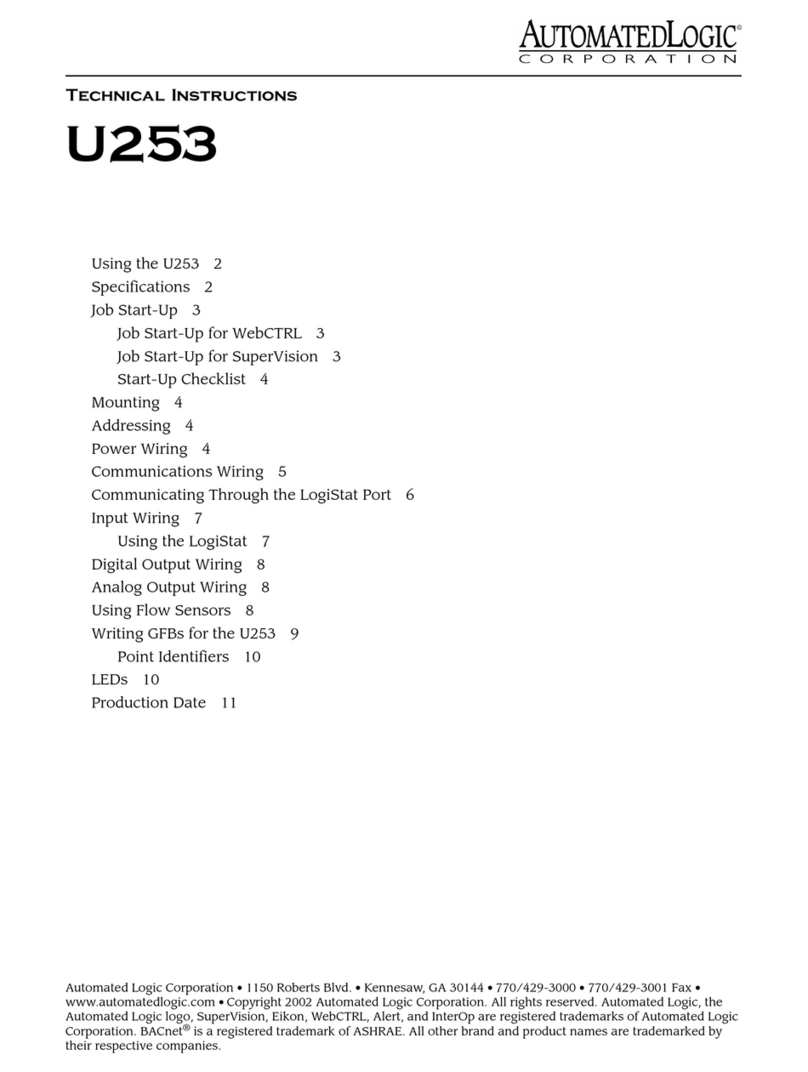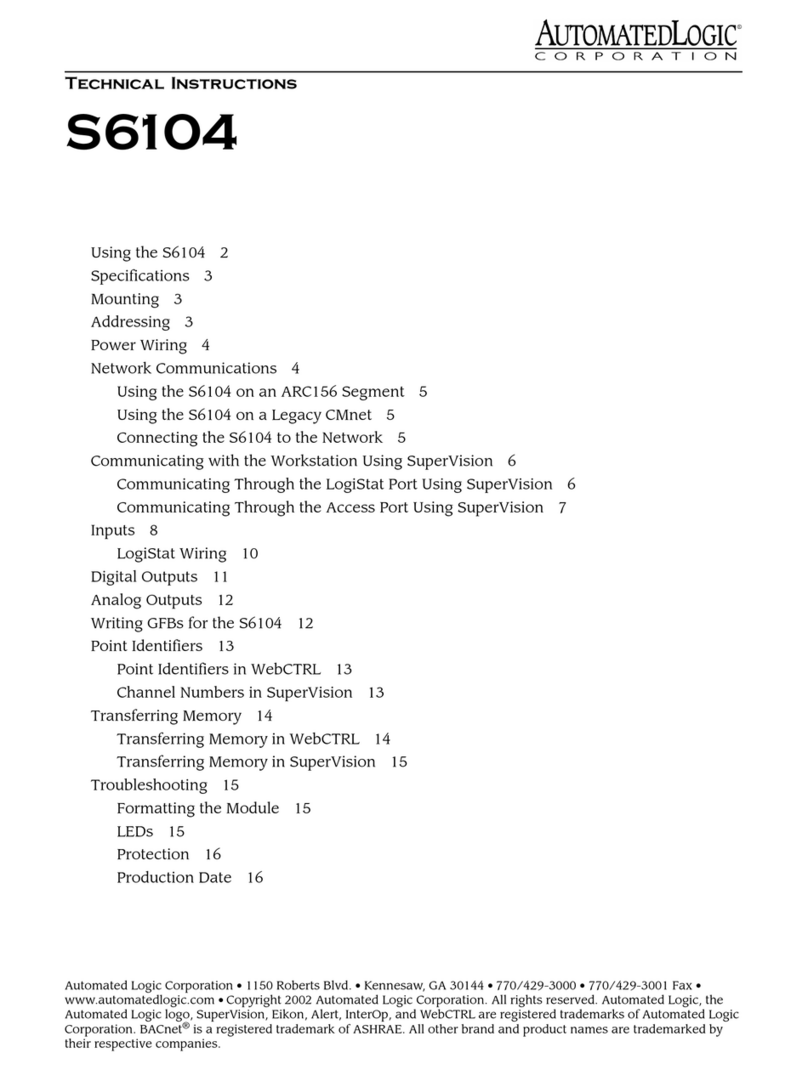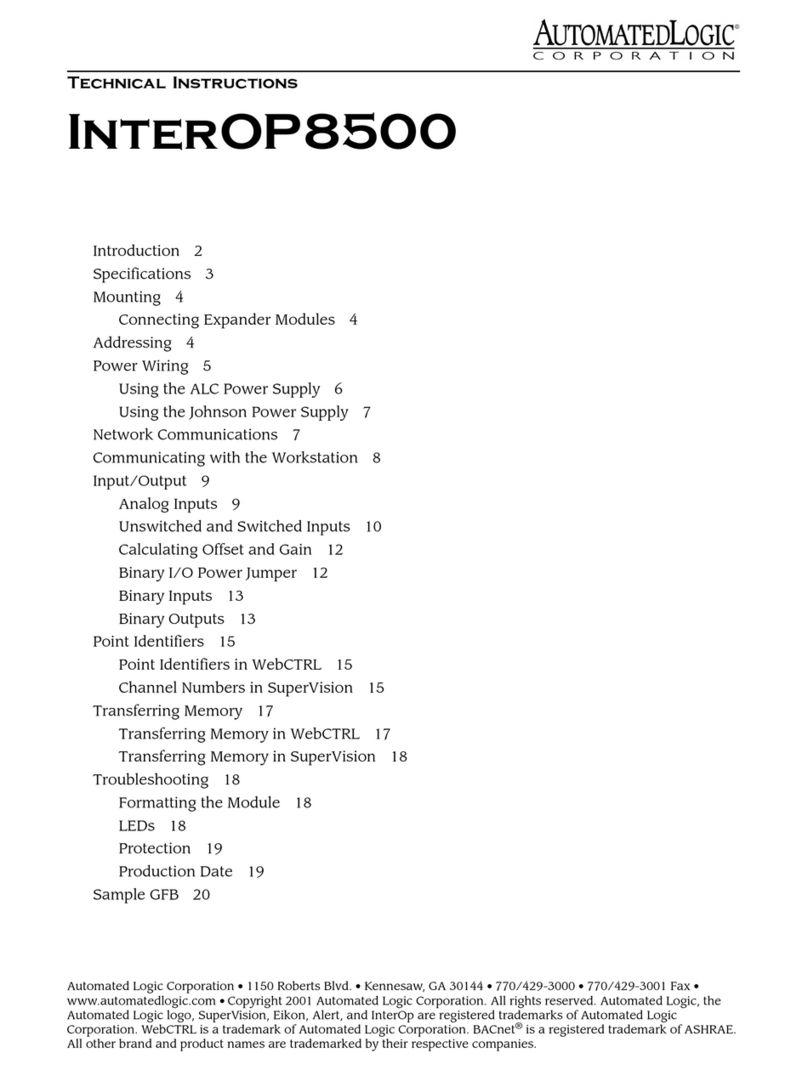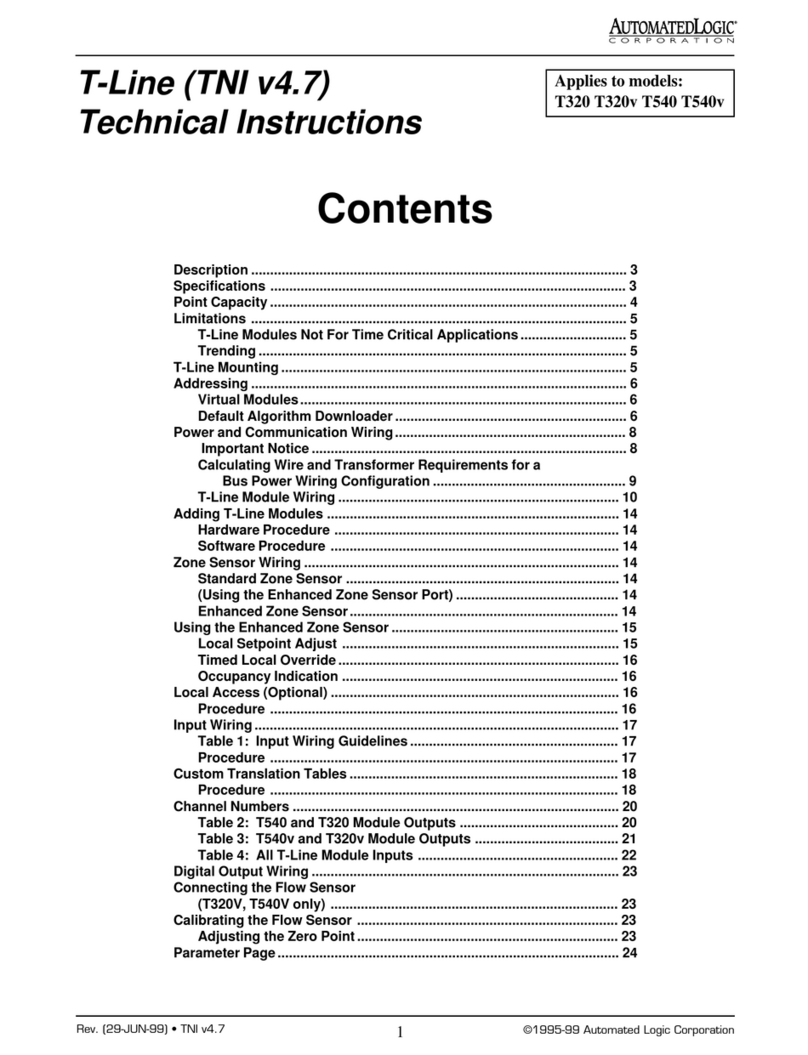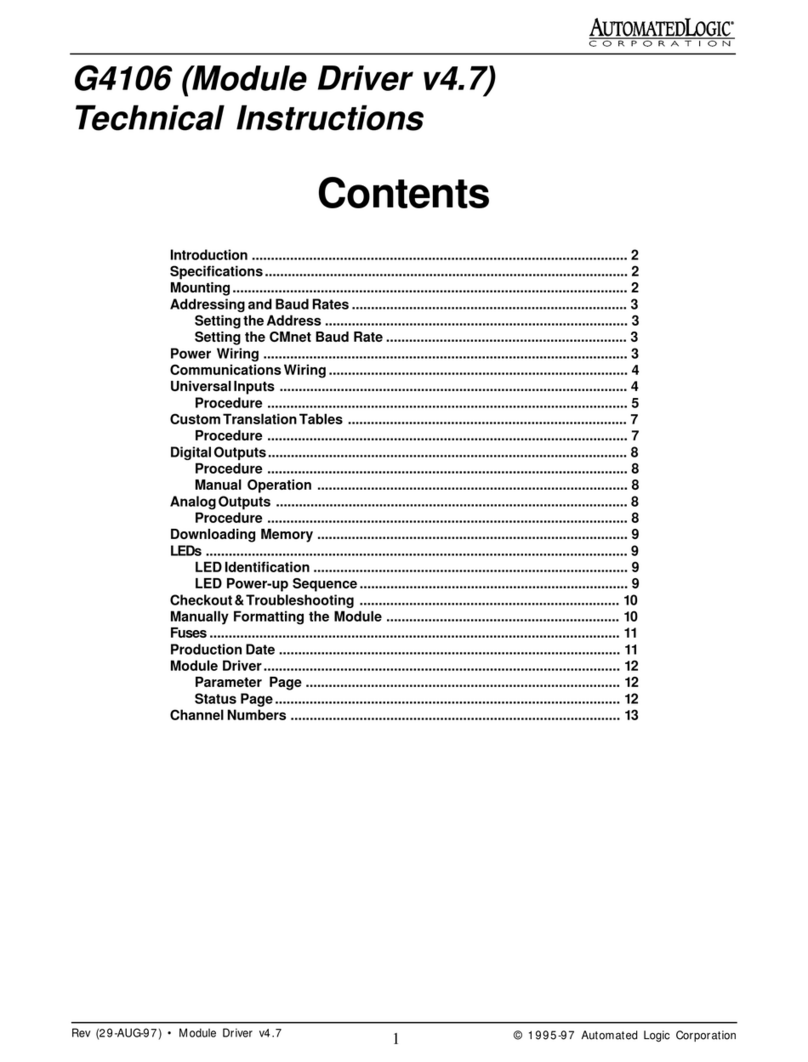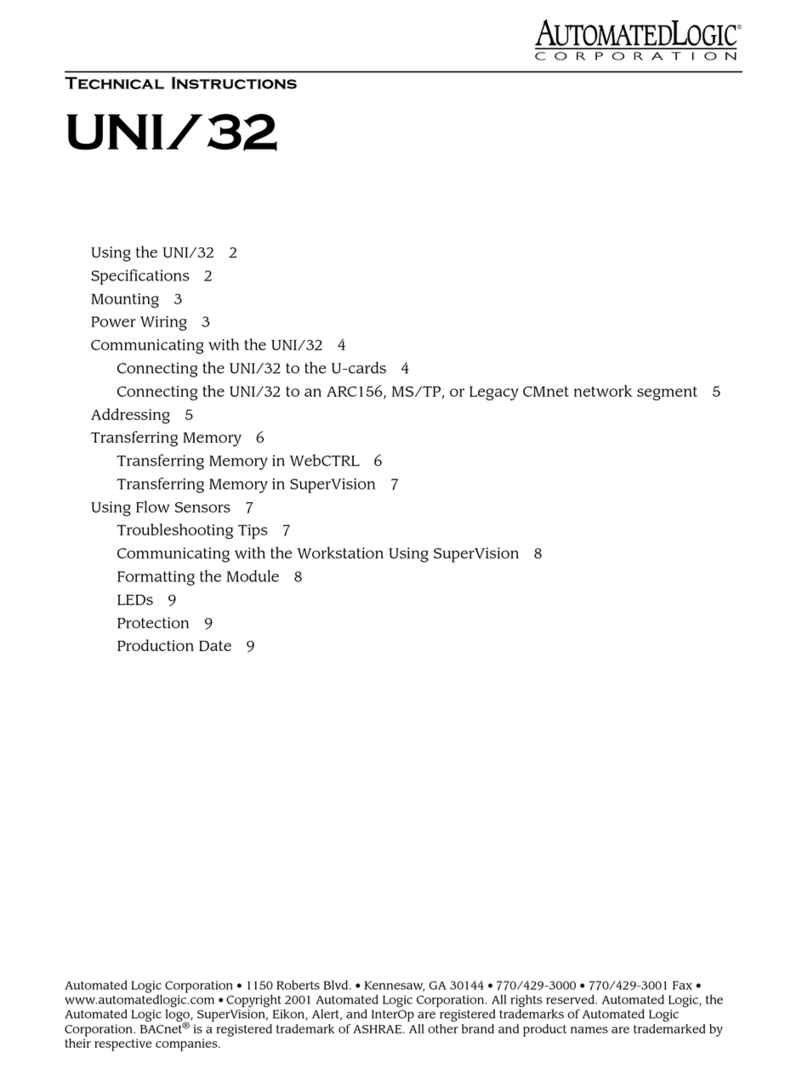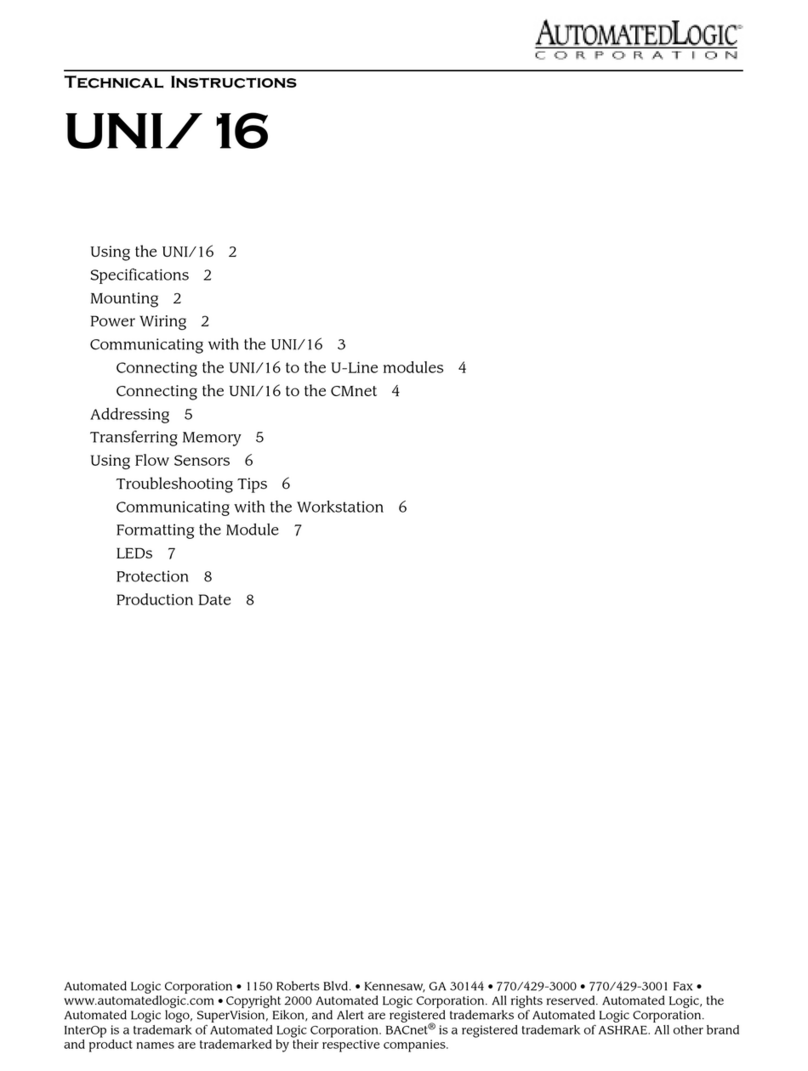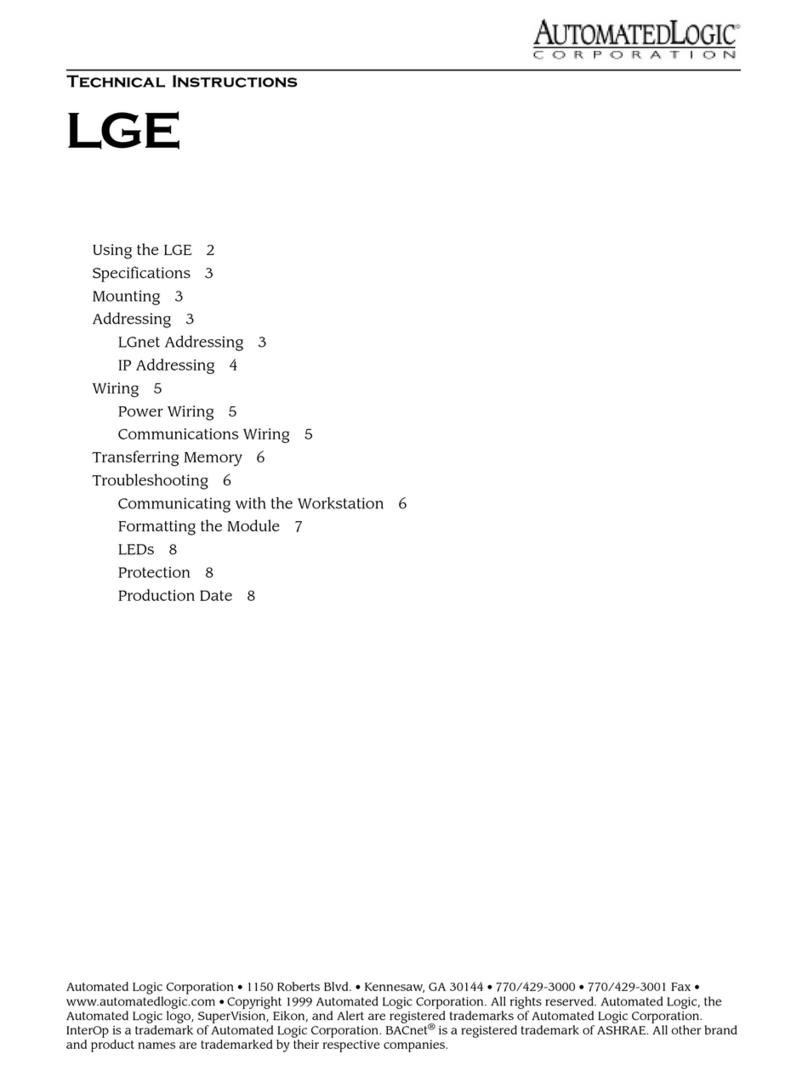
Revised 4/3/00 •M220nx 3 © 2000 Automated Logic Corporation
cause harmful interference in which case the
user will be required to correct the
interference at his own expense.
Specifications
Power 24VAC ± 10%, 50-60Hz (24VAC
±10%, 60Hz for UUKL Smoke Control
Systems), 20VA power consumption
(single Class 2 source only, 100VA or
less).
Inputs two universal inputs, configurable
for0-5VDC,0-20mA,orthermistor.
Input Resolution 10 bit A/D.
Digital Outputs two digital outputs, relay
contacts rated at 3A resistive @ 24VAC.
Configured as normally open.
Output Resolution 8bitD/A.
Communication 156 kbps ARCNET, 9600
bps or 38.4 kbps CMnet; twisted pair
wiring.
Environmental Operating Range 0°to
130°F(-17.8°to 54.4°C); 10 to 90%
relative humidity, non-condensing.
Status Indication Visual (LED) status of
CMnet communication, running, errors,
and power. (For UUKL Smoke Control
Systems, 32 to 120.2 °F[0to49°C]; 10 to
85% relative humidity, non-condensing.)
Memory 512KB Flash memory and 512KB
non-volatile battery-backed RAM.
Protection Voltage, current, and ESD
protection on incoming power and
CMnet.
Bat t e ry Seven-year lithium BR2325 battery
provides a minimum of 10,000 hours of
data retention during power outages.
Listed by UL 916 (PAZX), cUL C22.2 No.
205-M1983 (PAZX7), FCC Part 15 -
Subpart B - Class A.
Mounting
Screw the M220nx into an enclosed panel
using the mounting holes provided on the
cover plate. Be sure to leave about 2 inches (5
centimeters) on each side for wiring.
Addressing
Before setting or changing the address, make
sure the M220nx’s power is off. The M220nx
only reads the address when the module is
turned on. After changing the address, you
must transfer memory to the module. Refer to
“Transferring Memory”on page 8.
The M220nx has two rotary switches for
assigning the module’s CMnet address. One
switch corresponds to the tens digit and the
other corresponds to the ones digit. For
example, if the module’saddressisthree,set
the tens switch to zero and the ones switch to
three, as shown in Figure 2.
Power Wiring
Whenever possible, make sure the module’s
power and communications connections are
working properly before connecting any input
or output points.
CAUTION The M220nx module is a Class 2
device (less than 30VAC, 100VA maximum).
Take appropriate isolation measures when
mounting the M220nx module in a control
panel where non-Class 2 devices (for
example, 120VAC) or wiring are present.
You can power several modules from the
same transformer if you maintain the same
polarity.
Figure 2. Setting the module’s address
10's 1's
